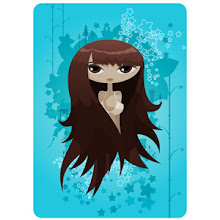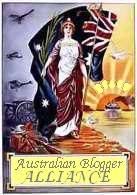CONGRATULATIONS TO ME ON MAKING MY 100TH POST!!!!!!!
CONNECTION, CONNECT WITH SOMEONE SPECIAL, A LOVED ONE IS A GIFT TO TREASURE.
June 28, 2004
IN 1938, three Australian psychoanalysts – Roy Winn, Paul Dane and Reginald Ellery – began working on behalf of six Hungarian colleagues who wished to flee Nazism. Australia was a sought-after destination for Jewish refugees, but passage was extremely difficult to secure. After much lobbying and several failed attempts, in the end only one of those six was allowed to come.
Clara Geroe arrived in Melbourne from Budapest in 1940. Like many forced to flee their homeland, she had been reluctant to leave Europe; and for a committed cinephile who had studied under Sandor Ferenczi, Australia's cultural and intellectual life must have appeared particularly arid.
She found little evidence of the exciting new movements that had begun fusing psychoanalytic theory and practice with developments in film, art and literature in the 1920s and '30s in Europe. Cubists and surrealists, in particular – including painters Pablo Picasso and Salvador Dali, film-maker Louis Bunuel and poets Paul Eluard and Louis Arragon – were using Freud's theories of the unconscious and its manifestations to push the boundaries of the arts. Texts by Freud – including his key works Civilisation and Its Discontents and The Psychopathology of Everyday Life – were also read by authors such as Andre Breton and Henry James, who were exploring automatic writing and psychoanalytic themes, respectively.
There were pockets of activity influenced by surrealism in Australia: artist James Gleeson and writer Max Harris, for example, were part of a mini movement. But cultural life in Melbourne was, broadly speaking, conservative.
"The surrealists claimed Freud as their father figure," says Janine Burke, who is writing a book about Freud's art collection. While a progressive minority was embracing Freudian theory in Europe, in Australia psychoanalysts were still viewed as "the devil's progeny", says Burke.
Geroe immediately set about changing this. Within months of arriving she founded the Melbourne Institute of Psychoanalysis, the first such organisation in the country, with the aim of moving psychoanalytic ideas out of the clinic and into the wider community.
Roy Winn, the first Australian-born psychoanalyst, had begun practising in Sydney in 1936. "He was very much alone there," says University of Melbourne history professor Joy Damousi. "There was much more activity around psychoanalytic ideas in Melbourne as it was the city with the densest Jewish intellectual life."
This milieu helped the institute achieve its goals. So did the friendships Geroe formed with Ellery and with a teacher, Janet Nield. The three of them laboured to promote psychoanalysis, and slowly it began to permeate art, architecture and education.
Their legacy is explored in Penetralia: Art and Psychoanalysis opening on Thursday at RMIT Gallery in Melbourne, an exhibition of photographs, architectural models and plans, historical films and works by 14 artists including Albert Tucker, Sidney Nolan, Danila Vassilieff, Richard Dunn, Lyndal Jones and Caroline Williams.
Nolan and Vassilieff were among the artists Nield engaged to teach at the progressive Koornong School, which she ran in Warrandyte with her husband Clive from 1939 to 1945. Nield was first psychoanalysed by Geroe in 1941, and thereafter sought her advice on running her school. Geroe, in turn, sent her son to be educated at Koornong.
The Nields founded Koornong as an alternative to conventional schools that they thought were utilitarian, simply producing workers and careerists. "The first foundation of radical education," the Nields wrote, "is the knowledge of the emotional development of children which the discoveries of Freud and the dynamic psychologists have provided."
Freedom and expression were the words that characterised the philosophy of the school, which catered for primary and secondary students. Wanting the school buildings to reflect these ideals of self-expression, the Nields engaged Melbourne architects Best Overend and Fritz Janeba. The result was high modernist design that predated Harry Seidler's more famous house for his mother Rose, which was completed in 1950. "The Nields had an openness to the new that introduced the most extraordinary opportunities for progressives," says RMIT director and Penetralia curator Suzanne Davies.
Nield was also an avid art collector and close friend of British philosopher Richard Wollheim, who wrote extensively on art and aesthetics and coined the phrase minimalist art. Koornong provided paid work to radical artists, including Nolan and Vassillieff. As teachers, these men influenced the school's more creative graduates, most notably artist Ken Whissen and architect Lawrence Nield (Janet's son), whose work is also in Penetralia.
Koornong clearly facilitated the creative development of its students. While Davies also believes it had an impact on the work of Nolan and Vassillieff, however, the influence is more difficult to identify. It was Ellery's relationship with Heide – John and Sunday Reed's radical community of artists in Melbourne, which included Nolan, Tucker and Joy Hester – that furthered psychoanalysis in art.
Ellery, who joined the board of the Melbourne Institute of Psychoanalysis in 1940 and believed psychoanalysis was relevant to all aspects of human endeavour, was a close friend of the Reeds. He contributed articles on art and the unconscious to John Reed's journal Angry Penguins, and Reed published Ellery's books Eyes Left (1943) and Psychiatric Aspects of Modern Warfare (1945), both of which were read by the Heide artists.
His writings were dominated by the relationship between the unconscious and the political, ideas reflected in the work of the Heide artists. A preoccupation with trauma, the psychological and the power of unconscious imagery is apparent in the work of Hester around this time, and is also seen in the efforts of Tucker, Nolan and John Brack to visualise the nightmares unleashed by World War II.
Ellery believed there was a direct link between the unconscious and the creative process. In expressing his "repressed wishes", the artist was "reviving traumatic memories and unconsciously drawing upon his fantasies . . . which . . . become attached to his creations".
Psychoanalyst Ken Heyward, a co-organiser of Penetralia, argues that psychoanalysis, as a method for investigating the human mind and the unconscious, is still a powerful tool for artists.
"Psychoanalysts believe creativity comes from the unconscious, because that's where our emotions have their origins and where they derive their energy. Exploring the unconscious, therefore, can be useful for artists," says Heyward.
The link between art and psychoanalysis has changed, however. While painters in the '40s were content to illustrate the unconscious, artists now use it to probe their minds in order to better understand how and why they go about their work. Artist Richard Dunn is Davies's partner. He says that three years of analysis with Janet Nield – who later qualified as an analyst – was "a form of education not to be missed".
He says analysis, including the interpretation of dreams and its process of free association, "taught me an understanding of the connection between internal events and external appearances ..."
Williams says psychoanalytic theory gives artists a useful antidote to the fast-paced art market, focused as it is on positioning, branding and profile. "Analytic thinking and ideas are about slowness, about the individual finding their own timing and pace, rather than just fitting into external demands."
I FOUND THIS TODAY IN ONE OF OUR COUNTRIES NEWSPAPERS. IN MY STUDIES, I HAVE HAD TO DEAL WITH A FAIR BIT OF PSYCHOLOGY MAINLY WITH CRIMINALS; CONCENTRATING ON THEMES OF SCHIZOPHRENIA AND MULTIPLE PERSONALITY DISORDERS. A COMMON THEME FOUND IS THAT MANY WITH THESE DISORDERS ARE QUITE "ARTY".






0 Comments:
Post a Comment
Subscribe to Post Comments [Atom]
<< Home